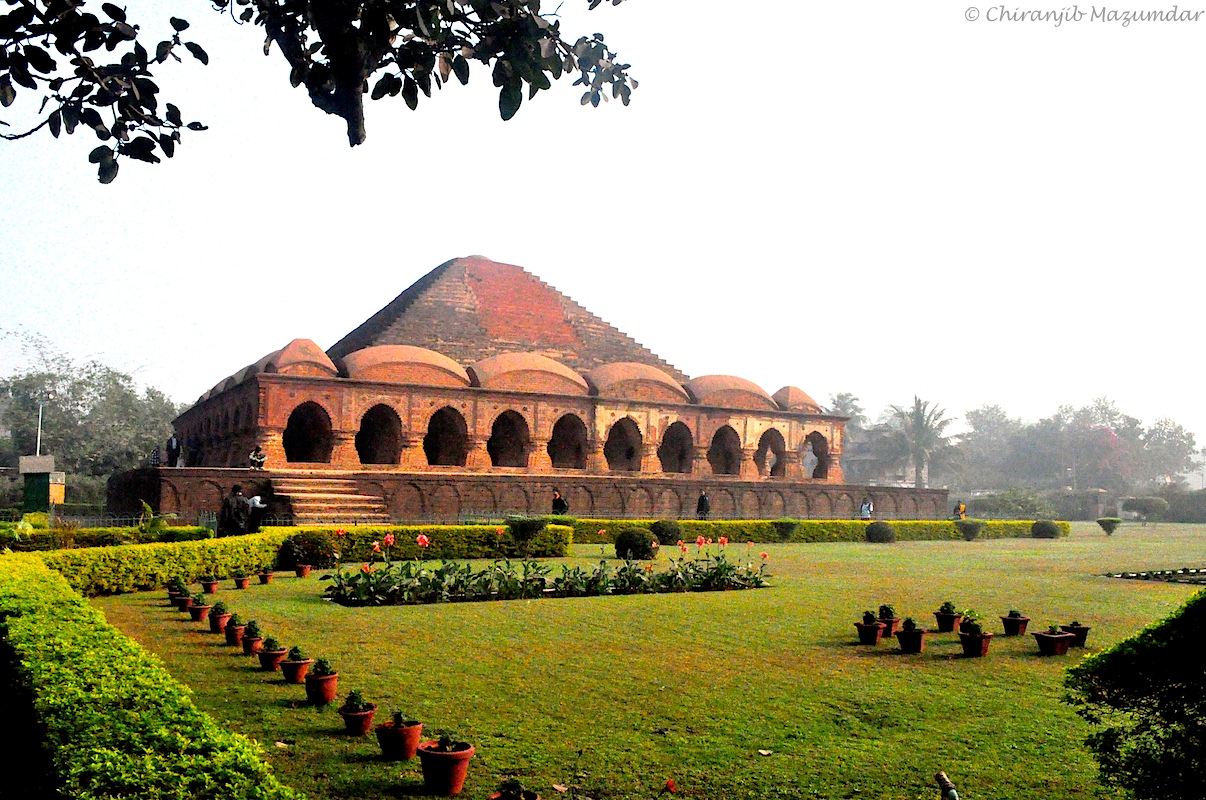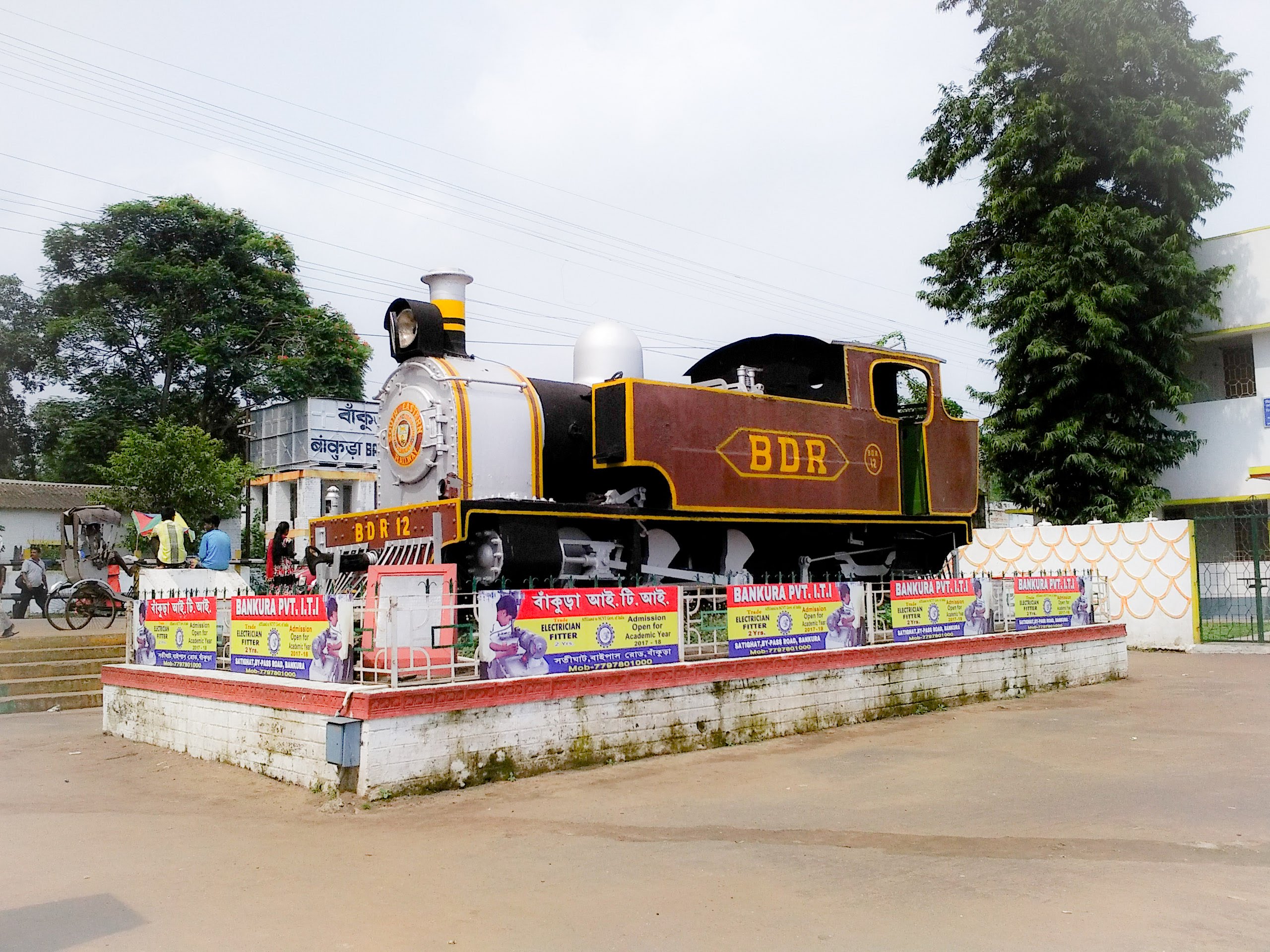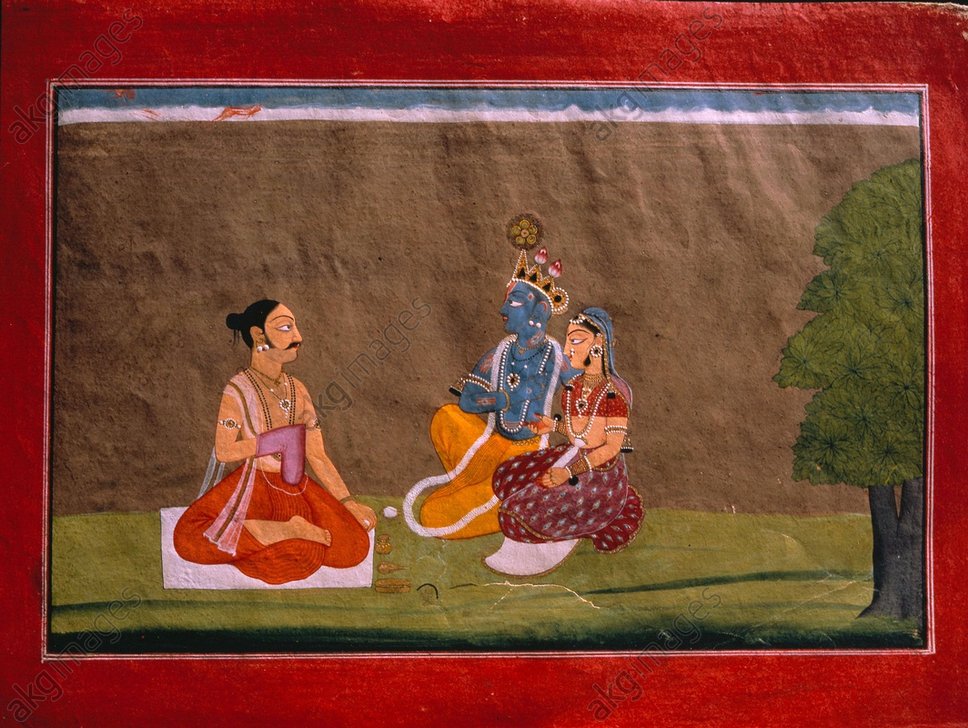|
Rasmancha, Bishnupur
The Rasmancha (Bengali: রাসমঞ্চ; ''Raasmoncho'') is a historical temple located at Bishnupur, Bankura district, West Bengal, India. It was commissioned by Mallabhum king Hambir Malla Dev (Bir Hambir) in 1600 CE.''Bishnupur'' (Bengali), S. S. Biswas, Archaeological Survey of India, New Delhi, p. 23-24 Length and breadth of this temple is 24.5 meter and the height is 12.5 meter. The base of the temple is made of laterite stone and upper part is made with bricks. The upper structure has a pyramidal roof, while the outer faces have small roof domes in a vernacular Bengali style. The ground floor has many cusped arches, reflecting the influence of Indo-Islamic architecture. During the Vaishnava Ras festival, all the Radha Krishna Radha-Krishna (IAST , sa, राधा कृष्ण) are collectively known within Hinduism as the combined forms of feminine as well as the masculine realities of God. Krishna and Radha are the primeval forms of God and his pleasur ... [...More Info...] [...Related Items...] OR: [Wikipedia] [Google] [Baidu] |
Bishnupur, Bankura
Bishnupur is a city and a municipality of Bisnupur district in the state of West Bengal, India. It is the headquarters of the Bishnupur District. It is famous for its terracotta temples built by the Malla rulers, historic Radha Krishna temples built during 1600–1800 CE and the Baluchari sarees. History Bishnupur was ruled under the Gupta period by local Hindu kings who paid tribute to Samudra Gupta. Following a long period of obscurity, where the land oscillated between being a minor independent principality and a vassal state. The land is also called Mallabhum after the Malla rulers of this place. The Malla rulers were Vaishnavites and built the famous terracotta temples during the 17th and 18th centuries at this place. The legends of Bipodtarini Devi are associated with Malla Kings of Bishnupur. For almost a thousand years it was the capital of the Malla kings of Mallabhum, of which Bankura was a part, till their power waned during the times when Mughal Empire weakene ... [...More Info...] [...Related Items...] OR: [Wikipedia] [Google] [Baidu] |
West Bengal
West Bengal (, Bengali: ''Poshchim Bongo'', , abbr. WB) is a state in the eastern portion of India. It is situated along the Bay of Bengal, along with a population of over 91 million inhabitants within an area of . West Bengal is the fourth-most populous and thirteenth-largest state by area in India, as well as the eighth-most populous country subdivision of the world. As a part of the Bengal region of the Indian subcontinent, it borders Bangladesh in the east, and Nepal and Bhutan in the north. It also borders the Indian states of Odisha, Jharkhand, Bihar, Sikkim and Assam. The state capital is Kolkata, the third-largest metropolis, and seventh largest city by population in India. West Bengal includes the Darjeeling Himalayan hill region, the Ganges delta, the Rarh region, the coastal Sundarbans and the Bay of Bengal. The state's main ethnic group are the Bengalis, with the Bengali Hindus forming the demographic majority. The area's early history featured a succession ... [...More Info...] [...Related Items...] OR: [Wikipedia] [Google] [Baidu] |
India
India, officially the Republic of India (Hindi: ), is a country in South Asia. It is the seventh-largest country by area, the second-most populous country, and the most populous democracy in the world. Bounded by the Indian Ocean on the south, the Arabian Sea on the southwest, and the Bay of Bengal on the southeast, it shares land borders with Pakistan to the west; China, Nepal, and Bhutan to the north; and Bangladesh and Myanmar to the east. In the Indian Ocean, India is in the vicinity of Sri Lanka and the Maldives; its Andaman and Nicobar Islands share a maritime border with Thailand, Myanmar, and Indonesia. Modern humans arrived on the Indian subcontinent from Africa no later than 55,000 years ago., "Y-Chromosome and Mt-DNA data support the colonization of South Asia by modern humans originating in Africa. ... Coalescence dates for most non-European populations average to between 73–55 ka.", "Modern human beings—''Homo sapiens''—originated in Africa. Then, int ... [...More Info...] [...Related Items...] OR: [Wikipedia] [Google] [Baidu] |
Bir Hambir
Hambir Malla Dev (also known as Bir Hambir, Beera Hambeera, and Veer Hambir) was the forty-ninth king of Mallabhum. He ruled from 1565 to 1620 AD.Malabhum, Bishnupur-Chandra, Manoranjan; 2004; Kolkata. Deys Publishing Personal life Hambir was the 49th ruler of the Malla dynasty who flourished around 1586 AD and ruled in 16th-17th century, and was a contemporary of the Mughal emperor Akbar. He fought on the side of Akbar against the Afghans and paid an annual tribute to the Mughal governors of Bengal and thus acknowledged their suzerainty.O’Malley, L.S.S., ICS, ''Bankura'', ''Bengal District Gazetteers'', pp. 21-46, first published 1908, 1995 reprint, Government of West Bengal Bir Hambir was a pious man who started following Vaishnavism. A story in two Vaishnava works (Prem-vilasa of Nityananda Das (alias Balaram Das) and Bhakti Ratnakara of Narahari Chakrabarti) recounts the manner in which Srinivasa and other devotees were robbed by Bir Hambir while travelling from Vrindavan to ... [...More Info...] [...Related Items...] OR: [Wikipedia] [Google] [Baidu] |
Archaeological Survey Of India
The Archaeological Survey of India (ASI) is an Indian government agency that is responsible for archaeological research and the conservation and preservation of cultural historical monuments in the country. It was founded in 1861 by Alexander Cunningham who also became its first Director-General. History ASI was founded in 1861 by Alexander Cunningham who also became its first Director-General. The first systematic research into the subcontinent's history was conducted by the Asiatic Society, which was founded by the British Indologist William Jones on 15 January 1784. Based in Calcutta, the society promoted the study of ancient Sanskrit and Persian texts and published an annual journal titled ''Asiatic Researches''. Notable among its early members was Charles Wilkins who published the first English translation of the '' Bhagavad Gita'' in 1785 with the patronage of the then Governor-General of Bengal, Warren Hastings. However, the most important of the society's achieveme ... [...More Info...] [...Related Items...] OR: [Wikipedia] [Google] [Baidu] |
Bengali Language
Bengali ( ), generally known by its endonym Bangla (, ), is an Indo-Aryan languages, Indo-Aryan language native to the Bengal region of South Asia. It is the official, national, and most widely spoken language of Bangladesh and the second most widely spoken of the 22 scheduled languages of India. With approximately 300 million native speakers and another 37 million as second language speakers, Bengali is the List of languages by number of native speakers, fifth most-spoken native language and the List of languages by total number of speakers, seventh most spoken language by total number of speakers in the world. Bengali is the fifth most spoken Indo-European language. Bengali is the official language, official and national language of Bangladesh, with 98% of Bangladeshis using Bengali as their first language. Within India, Bengali is the official language of the states of West Bengal, Tripura and the Barak Valley region of the state of Assam. It is also a second official lan ... [...More Info...] [...Related Items...] OR: [Wikipedia] [Google] [Baidu] |
Bankura District
Bankura district (Pron: bãkuɽa) is an administrative unit in the Indian state of West Bengal. It is part of Medinipur division—one of the five administrative divisions of West Bengal. Bankura district is surrounded by Purba Bardhaman district and Paschim Bardhaman district in the north, Purulia district in the west, Jhargram district and Paschim Medinipur district in the south, and some part of Hooghly district in the east. Damodar River flows in the northern part of Bankura district and separates it with the major part of Burdwan district. The district head quarter is located in Bankura town. The district has been described as the "connecting link between the plains of Bengal on the east and Chota Nagpur plateau on the west." The areas to the east and north-east are low-lying alluvial plains while to the west the surface gradually rises, giving way to undulating country, interspersed with rocky hillocks.O’Malley, L.S.S., ICS, ''Bankura'', Bengal District Gazetteers, pp. ... [...More Info...] [...Related Items...] OR: [Wikipedia] [Google] [Baidu] |
Cusped Arch
A multifoil arch (or polyfoil arch), also known as a cusped arch, polylobed arch, or scalloped arch, is an arch characterized by multiple circular arcs or leaf shapes (called foils, lobes, or cusps) that are cut into its interior profile or intrados. The term ''foil'' comes from the old French word for "leaf." A specific number of foils is indicated by a prefix: trefoil (three), quatrefoil (four), cinquefoil (five), sexfoil (six), octofoil (eight). The term multifoil or scalloped is specifically used for arches with more than five foils. The multifoil arch is characteristic of Islamic art and architecture; particularly in the Moorish architecture of al-Andalus (Iberian Peninsula) and North Africa and in Mughal architecture of the Indian subcontinent. Variants of the multifoil arch, such as the trefoil arch, are also common in other architectural traditions such as Gothic architecture. Origins The first multifoil arches were developed by the Umayyads and can be found in a s ... [...More Info...] [...Related Items...] OR: [Wikipedia] [Google] [Baidu] |
Indo-Islamic Architecture
Indo-Islamic architecture is the architecture of the Indian subcontinent produced by and for Islamic patrons and purposes. Despite an initial Arab presence in Sindh, the development of Indo-Islamic architecture began in earnest with the establishment of Delhi as the capital of the Ghurid dynasty in 1193. Succeeding the Ghurids was the Delhi Sultanate, a series of Central Asian dynasties that consolidated much of North India, and later the Mughal Empire by the 15th century. Both of these dynasties introduced Persianate architecture and art styles from Western Eurasia into the Indian subcontinent. The types and forms of large buildings required by Muslim elites, with mosques and tombs much the most common, were very different from those previously built in India. The exteriors of both were very often topped by large domes, and made extensive use of arches. Both of these features were hardly used in Hindu temple architecture and other indigenous Indian styles. Both types of ... [...More Info...] [...Related Items...] OR: [Wikipedia] [Google] [Baidu] |
Vaishnava
Vaishnavism ( sa, वैष्णवसम्प्रदायः, Vaiṣṇavasampradāyaḥ) is one of the major Hindu denominations along with Shaivism, Shaktism, and Smartism. It is also called Vishnuism since it considers Vishnu as the sole supreme being leading all other Hindu deities, i.e. ''Mahavishnu''. Its followers are called Vaishnavites or ''Vaishnava''s (), and it includes sub-sects like Krishnaism and Ramaism, which consider Krishna and Rama as the supreme beings respectively. According to a 2010 estimate by Johnson and Grim, Vaishnavism is the largest Hindu sect, constituting about 641 million or 67.6% of Hindus. The ancient emergence of Vaishnavism is unclear, and broadly hypothesized as a fusion of various regional non-Vedic religions with Vishnu. A merger of several popular non-Vedic theistic traditions, particularly the Bhagavata cults of Vāsudeva-krishna and ''Gopala-Krishna'', and Narayana, developed in the 7th to 4th century BCE. It was integrated w ... [...More Info...] [...Related Items...] OR: [Wikipedia] [Google] [Baidu] |
Radha Krishna
Radha-Krishna (IAST , sa, राधा कृष्ण) are collectively known within Hinduism as the combined forms of feminine as well as the masculine realities of God. Krishna and Radha are the primeval forms of God and his pleasure potency (Hladini Shakti), respectively, in several Vaishnavism, Vaishnavite schools of thought. In Krishnaism, Krishnaite traditions of Vaishnavism, Krishna is referred to as ''Svayam Bhagavan'' and Radha is illustrated as the primeval potency of the three main potencies of God, ''Hladini (immense spiritual bliss), Sandhini (eternality) and Samvit (existential consciousness)'' of which Radha is an embodiment of the feeling of love towards the almighty Lord Krishna (''Hladini''). With Krishna, Radha is acknowledged as the Supreme Goddess. It is said that Krishna is only satiated by devotional service in loving servitude and Radha is the personification of devotional service to the supreme lord. Various devotees worship her with the understandin ... [...More Info...] [...Related Items...] OR: [Wikipedia] [Google] [Baidu] |
Radha Krishna Temples
Radha ( sa, राधा, ), also called Radhika, is a Hindu goddess and the chief consort of the god Krishna. She is worshiped as the goddess of love, tenderness, compassion, and devotion. She is the avatar of goddess Lakshmi and is also described as the chief of the ''Gopis'' (milkmaids). During Krishna's youth, she appears as his lover and companion. Many traditions and scriptures accord Radha the status of the eternal consort and wife of Krishna. Radha, as a supreme goddess, is considered as the female counterpart and the internal potency (''hladini shakti'') of Krishna, who resides in Goloka, the celestial abode of Radha Krishna. Radha is said to accompany Krishna in all his incarnations. In Radha Vallabh Sampradaya and Haridasi Sampradaya, only Radha is worshiped as the supreme deity. Elsewhere, she is venerated with Krishna as his principal consort in Nimbarka Sampradaya, Pushtimarg, Mahanam Sampraday, Swaminarayan Sampradaya, Vaishnava-Sahajiya and Gaudiya Vaishnavis ... [...More Info...] [...Related Items...] OR: [Wikipedia] [Google] [Baidu] |
%2CBankura%2CWest_Bengal%2CIndia.jpg)





